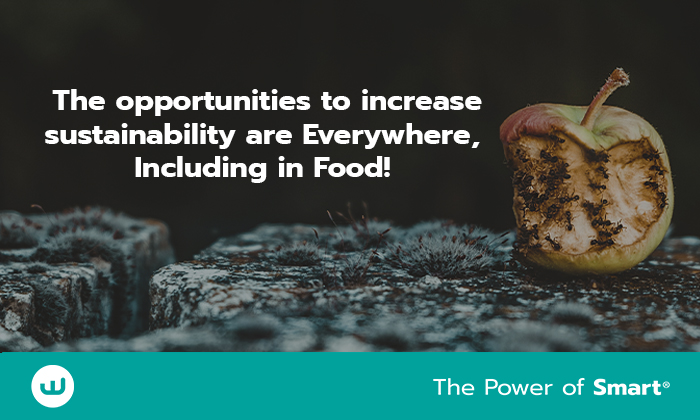1. In general, what is the main challenge and objective of the Smart Supply Chain?
Smart Supply Chain requires the incorporation of new data capture and identification technologies to achieve complete dynamic and structural visibility, from the factory to the final consumer. The challenge is to involve all actors in the chain in a transparent way, without affecting their current costs and operations, including suppliers and customers. The objective is to collect quality data and deliver to the available Warehouse Management Systems (WMS), so their customers be able to make the most of technologies like Artificial Intelligence, Data analytics including prescriptions, along with other advantages such as:
- Accurate planning and decision-making.
- Optimization of human and material resources.
- Mitigation of operational risks.
- Avoidance of downtime.
- Increased efficiency, transparency, and process improvement.
- Automated increase in the customer life cycle.
- Contribute to the sustainability of the planet by reducing the carbon footprint throughout the production and commercial branches of the industries.
- Provide Total Visibility.
2. How do current Warehouse Management Systems (WMS) achieve Quality Data Capture to transform Supply Chain into Smart?
Each WMS has its own capabilities, features, advantages, and differences, tailored to the needs of the industry or its specific customers. However, they all have in common the need to enter quality data to deliver quality results.
To obtain Quality Data, there is a proven need to know “the state of things and operations”, where the only feasible source is through sensors via integration with IoT technology. However, the current limitations of IoT regarding its application at Industrial level are summarized in the cost of tags or beacons, the massive reading capacity, and the environmental impact due to the use of batteries including other “unsustainable” components that are part of IoT.
3. Is there any New Technology that will enable today’s WMS to break down the physical limitations for an efficient operation of IoT in the supply chain?
Taking into consideration the industrial needs and the post-COVID-19 World, Wiyo took a step forward to be included in the automated identification and data capture market, serving all current WMS, ERP Software’s, and all Digital Solutions providers. Wiyo aims to become the preferred technological partner for Industrialized quality data collection and supplier, in an efficient and sustainable way.
After years of research, development, and testing, Wiyo is finally here to bring the only Sustainable IoT technology with massive capability. Data capture occurs through smart labels that contains its patented new generation of batteryless smart nanochips, that harvest energy from available WiFi and enables at least 100µW of power supply.
Wiyo is the only IoT-based data Platform that identifies, captures, communicates and process data from any labeled object or product with their batteryless smart tags, using only WiFi. This means that Wiyo enables all-digital solution providers to go beyond conventional IoT, as the Platform does not require internet connection to capture and process data. Wiyo features edge computing, and this quality enables all technological partners the ability to have complete end-to-end functionality and Visibility across the entire Supply Chain.
A recent study published by Gartner, established that 25% of Supply Chain decisions will be made in intelligent edge ecosystems, that is, companies demand solutions that allow data processing close to the place where the activity occurs.
Wiyo’s platform, through its licensing and service structure, offers APIs for an easy integration with Technological Partners. Wiyo provides automated quality data packages that allow response to real-time events, product localization, process performance, prevention of Supply Chain disruptions, and interaction with the products and objects involved in the operation in a scalable way. Its low capex and simplicity of implementation, allows an easy integration on the operation with suppliers, logistics routes, and manufacturing points—and above all, it enables Visibility while helping reduce CO2 footprint throughout the process.
4. Recently, studies have been published on the High Impact of Supply Chain on the environment. How does the integration of systems with Wiyo contribute to reduce such impact?
The U.S. Environmental Protection Agency states that organizations’ supply chains often account for more than 90% of their greenhouse gas (GHG) emissions, when considering their overall climate impacts. Emissions and the increased use of natural resources have expanded the carbon footprint of many industries.
New technologies, such as Digital Twins, aims to help reduce companies CO2 footprint. PWC stated that Artificial Intelligence could help to reduce CO2 emissions by 2.4 tons by 2030. However, you need a large amount of data to support and comply with different systems needs.
By integrating Wiyo to any digital technology such as Artificial Intelligence, Digital Twins, or any Software 2.0 based solution, the Platform automatically serves the IoT-based quality data needed to feed and thus enhance the use of these applications, which can lead to the quantification and analysis of the environmental impact and the potential reduction of industrial emissions.
Thanks to the need of digitalization, many innovations, designs, and technological cooperation’s based on deep technology, will create different options and opportunities to elevate the value of the Supply Chain by making them Smart. In Wiyo, we look forward to enhancing the AIDC1 market and become another smart option on the ecosystem’s catalogue.
AIDC: Automated Identification and Data Capture.
Patricia Fermin de Moreno
CSO Wiyo Technologies



